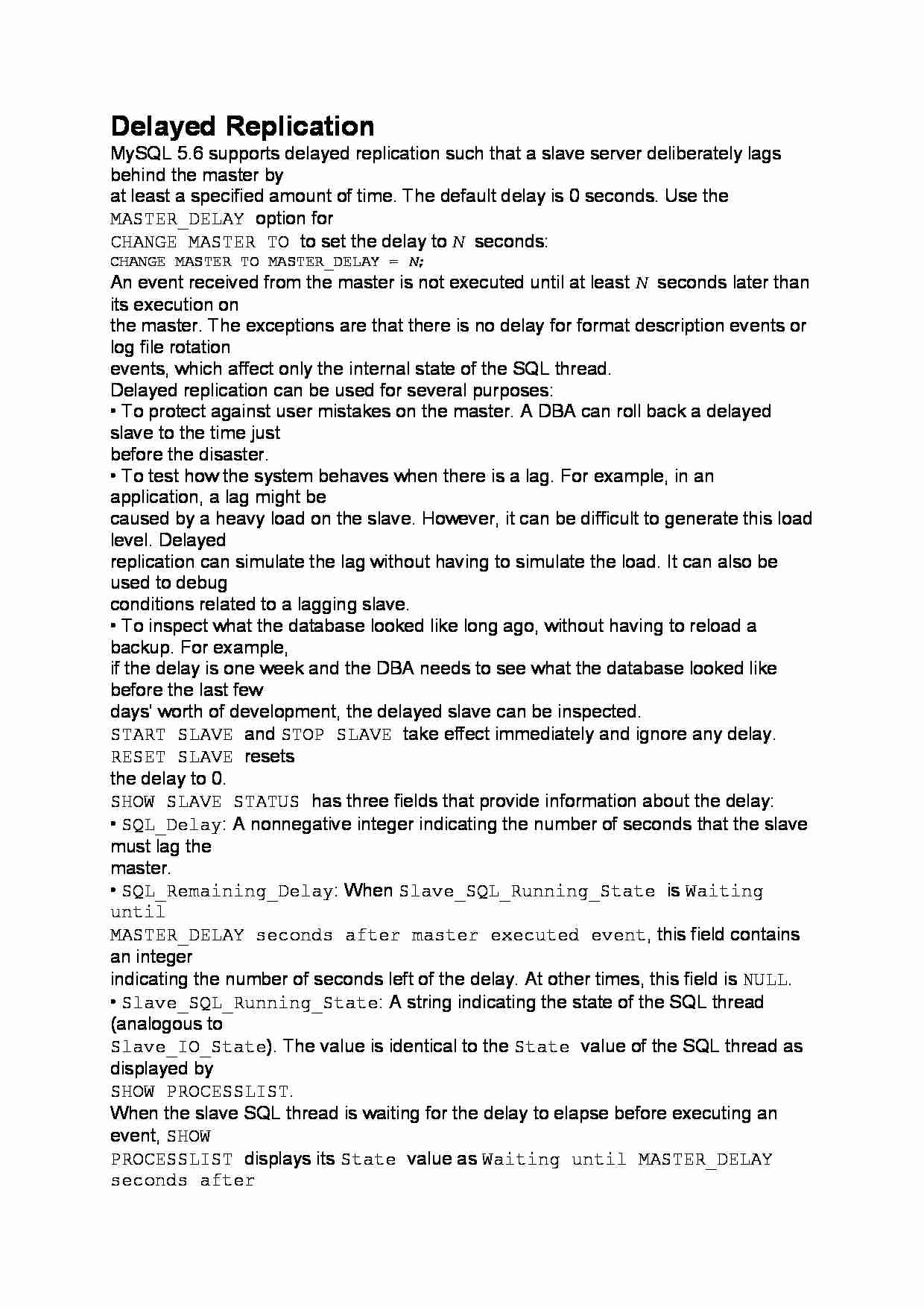To tylko jedna z 2 stron tej notatki. Zaloguj się aby zobaczyć ten dokument.
Zobacz
całą notatkę


Delayed Replication
MySQL 5.6 supports delayed replication such that a slave server deliberately lags behind the master by
at least a specified amount of time. The default delay is 0 seconds. Use the MASTER_DELAY option for
CHANGE MASTER TO to set the delay to N seconds:
CHANGE MASTER TO MASTER_DELAY = N;
An event received from the master is not executed until at least N seconds later than its execution on
the master. The exceptions are that there is no delay for format description events or log file rotation
events, which affect only the internal state of the SQL thread.
Delayed replication can be used for several purposes:
• To protect against user mistakes on the master. A DBA can roll back a delayed slave to the time just
before the disaster.
• To test how the system behaves when there is a lag. For example, in an application, a lag might be
caused by a heavy load on the slave. However, it can be difficult to generate this load level. Delayed
replication can simulate the lag without having to simulate the load. It can also be used to debug
conditions related to a lagging slave.
• To inspect what the database looked like long ago, without having to reload a backup. For example,
if the delay is one week and the DBA needs to see what the database looked like before the last few
days' worth of development, the delayed slave can be inspected.
START SLAVE and STOP SLAVE take effect immediately and ignore any delay. RESET SLAVE resets
the delay to 0.
SHOW SLAVE STATUS has three fields that provide information about the delay:
• SQL_Delay: A nonnegative integer indicating the number of seconds that the slave must lag the
master.
• SQL_Remaining_Delay: When Slave_SQL_Running_State is Waiting until
MASTER_DELAY seconds after master executed event, this field contains an integer
indicating the number of seconds left of the delay. At other times, this field is NULL.
• Slave_SQL_Running_State: A string indicating the state of the SQL thread (analogous to
Slave_IO_State). The value is identical to the State value of the SQL thread as displayed by
SHOW PROCESSLIST.
When the slave SQL thread is waiting for the delay to elapse before executing an event, SHOW
PROCESSLIST displays its State value as Waiting until MASTER_DELAY seconds after
master executed event.
The relay-log.info file now contains the delay value, so the file format has changed. See
Section 16.2.2.2, “Slave Status Logs”. In particular, the first line of the file now indicates how many
lines are in the file. If you downgrade a slave server to a version older than MySQL 5.6, the older
(…)
… particular, the first line of the file now indicates how many
lines are in the file. If you downgrade a slave server to a version older than MySQL 5.6, the older
server will not read the file correctly. To address this, modify the file in a text editor to delete the initial
line containing the number of lines.
…
... zobacz całą notatkę




Komentarze użytkowników (0)